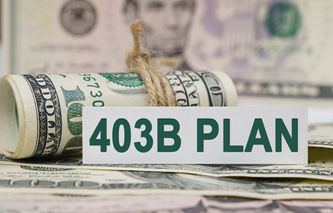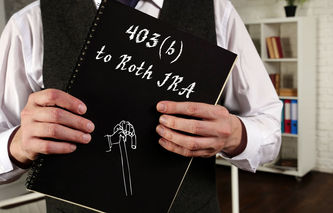With such an uncertain future for Social Security, individuals look to the safety of retirement savings plans such as the 403(b). But there comes a time when an individual may need to take a distribution, or make a transfer, from their 403(b) account, and the rules they need to follow can be quite complex.
In this article, we're going to explain how to avoid tax penalties associated with the withdrawal of money from a 403(b) account. That explanation will include a discussion of allowable distributions, as well as the most efficient way to make a transfer.
403(b) Distributions
To discourage the early use of money earmarked for retirement, there are some strict rules that apply to 403(b) distributions. In general, a distribution cannot be made until an individual:
Reaches age 59 1/2
Becomes disabled
Passes away
Is severed from employment
Experiences a financial hardship (applies to salary reduction contributions)
As is the situation with other retirement plans, if the money is contributed on a pre-tax basis, or earnings grew without paying taxes, then income taxes are owed on any early distribution taken from a 403(b) plan. Individuals planning to take an early distribution should also be prepared to pay both state and federal income taxes. Early distributions may also be subject to an additional 10% tax penalty.
Minimum Required Distributions
One of the big benefits of Roth IRAs is there are no minimum required distributions; that's not the case with 403(b) plans. If the plan was started before 1986, the help of the plan administrator is essential. In general, there are two minimum required distribution rules that apply to 403(b) accounts:
A certain proportion, or possibly all, of interest accruing after 1986 in a 403(b) account must be withdrawn by April 1st of the calendar year in which the individual becomes age 70 1/2 or the year they retire, whichever is later.
A minimum amount of the pre-1987 accruals must be distributed in the calendar year in which the individual reaches age 75, or April 1st of the calendar year following retirement, whichever is later. In each subsequent year, there is a minimum distribution that must be taken from a 403(b) account by the last calendar day of the year.
As mentioned, only a plan administrator can provide the exact process to follow, since the rules will depend on how the plan was established. If a required minimum distribution is not taken, then the accountholder may be subject to a non-deductible 50% excise tax on the difference between the required minimum distribution and the amount actually distributed. That can be a very expensive penalty to pay.
403(b) Transfers
It is possible to transfer either all, or part, of the interest from one 403(b) account to another on at tax-free basis. This is sometimes referred to as a transfer of interest contract, or a 90-24 transfer. This tax-free treatment may also apply if the transferred interest is subject to the same, or stricter, distribution rules.
This transfer rule applies to current employees, former employees, and the beneficiaries of former employees. If a transfer does not satisfy the rule mentioned above, the distribution will likely be viewed as ordinary income and is taxable.
Cash Transfers
If an insurance company is in rehabilitation or insolvency, then it's possible to make a cash transfer to a 403(b) account and receive tax-free treatment. To make this cash transfer without incurring a penalty, the following steps must be taken:
Withdraw all cash to which the accountholder is entitled, or the maximum permitted by the state if that is less than the full amount.
Reinvest this cash distribution into a single policy issued by another insurance company, or a custodial account that is subject to the same or stricter distribution rules. This reinvestment must take place no more than 60 days after receiving the cash distribution.
Assign all future distribution rights to the new account if the full amount was not received due to the state restrictions mention in step 1.
Transfer of Information to Insurer
When making this type of cash transfer, the new insurer must be provided with a written statement that contains the following information:
Amount of cash reinvested in the new contract.
The amount invested in the old contract on the date the first distribution was received.
Transfer Information on Income Taxes
In addition to the information sent to an insurer, the income tax return for the year an individual first received a cash distribution must have attached to it:
A copy of the statement provided to the new insurer.
A statement that includes the words:
ELECTION UNDER REV. PROC. 92-44
The name of the company issuing the new contract, as well as the new policy number.
Trustee-to-Trustee Transfers
Finally, it's possible to make a direct trustee-to-trustee transfer of a 403(b) account to another defined governmental benefit plan, and not include the transfer amount in gross income. Two scenarios that apply to this non-includable transfer include:
To purchase permissive service credits.
To repay contributions or earnings that was previously refunded under a forfeiture of service credit under a plan, or another plan maintained by a government employer within the same state.
Once again, these trustee transfers can be complex, so it's important to check with the plan administrator as to the type, and the extent, of service that may be purchased by this type of transfer. Getting the plan administrator involved will help complete all transactions in a timely manner, and avoid unnecessary tax penalties.




